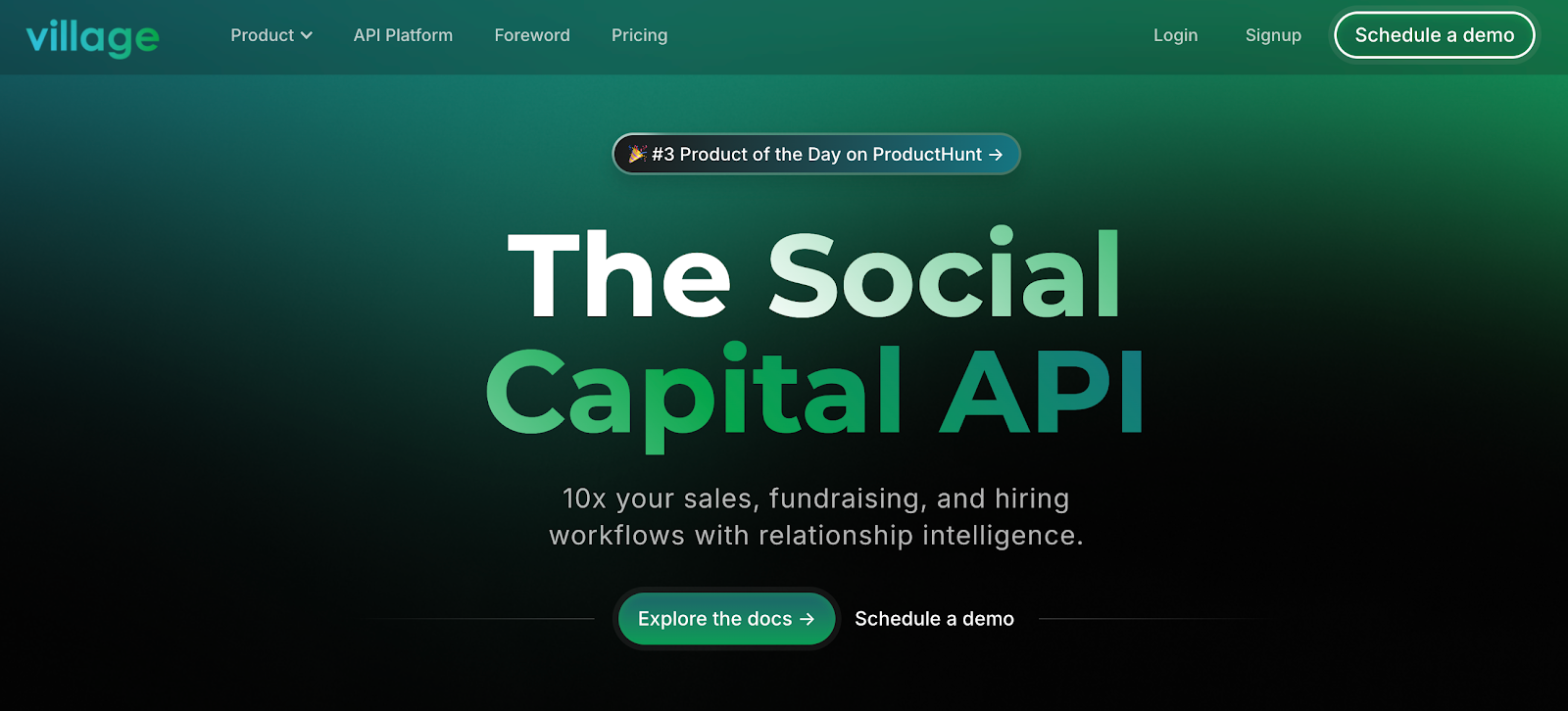Reaching out to investors can feel intimidating. You know your business idea has potential, but how do you get the right people to believe in it? Sending a few emails and hoping for a response will not cut it. Investors hear from hundreds of entrepreneurs, so making a strong first impression is everything.
With the right approach, you can increase your chances of securing funding. A well-prepared pitch, a clear business plan, and a smart outreach strategy can get investors to take notice.
This guide will show you how to reach out to investors and discuss every step you need to take, from identifying the right investors to crafting a compelling pitch and making meaningful connections.
What Is Investor Outreach?
Investor outreach is the process of connecting with the right investors to secure funding for your business. It’s not about blasting emails. It is about strategic networking.
Successful investor outreach involves:
- Mapping your network to find hidden investor relationships
- Leveraging AI-powered search to filter potential investors
- Using warm introductions to bypass cold outreach
- Managing intro requests efficiently to build relationships at scale
Village helps founders and fund managers unlock millions in their network by automating warm intros and making connections 100x more effective. Schedule a demo now to learn more about the platform.
Types of Investors and What They Look For

Investors look for different opportunities depending on their risk appetite and business focus. Some prefer backing early-stage startup companies with high potential, while others fund businesses with proven revenue. Identifying investors who match your company’s stage and industry increases your chances of securing funding.
Here are the most common types of investors:
Angel Investors
Angel investors are individual investors who fund startups in the early stages, often before they generate revenue. Many are entrepreneurs or business professionals who invest their own money.
In addition to funding, they may offer guidance and industry connections. Angel investors typically look for innovative ideas, strong leadership, and a path to profitability.
Since angel investors typically invest in founders they believe in, finding a personal connection can help you secure funding. Village’s AI-powered investor search makes it easier to identify angel investors who align with your industry and funding stage.
Mapping your founder network can also reveal warm introductions that increase the likelihood of a conversation.
Venture Capitalists
Venture capitalists (VCs) manage investment funds that finance high-growth startups. They invest larger amounts than angel investors and expect equity in return. VCs focus on businesses with scalable models and measurable traction, such as revenue growth or a growing customer base. Many venture capital investors also look for founders who can handle rapid expansion.
Many venture capital firms prefer to invest in founders they have previously backed or those who come highly recommended within their network. With Village, you can filter VCs based on industry, funding stage, and investment history, making it easier to find firms that align with your business.
Limited Partners
Limited partners (LPs) are investors who fund VC firms and fund-of-funds, influencing which startups receive venture capital. They typically invest in venture funds rather than directly into startups.
Since LPs often work through VC introductions, understanding their co-investment history can help uncover new opportunities. Village identifies LPs aligned with your business by analyzing past investments and shared connections, allowing you to approach the right investors with the right introductions.
Private Equity Investors
Private equity investors invest in established businesses that need capital for expansion, restructuring, or acquisitions. Unlike venture capitalists, they focus on companies with a track record of revenue and profitability.
Private equity investors often take a larger stake in the business and may be involved in management decisions.
Crowdfunding and Alternative Investors
Crowdfunding allows startups to raise money from multiple small investors, often through online platforms. This works well for consumer-focused products with strong market appeal.
Other funding sources include corporate investment programs, government grants, and investment firms that specialize in specific industries. These investors look for businesses that align with their interests or strategic goals.
How to Prepare Before Reaching Out to Investors
Reaching out to investors without preparation is like applying for a job without a resume. Investors want clear financials, a strong business plan, and a compelling reason to invest. Organizing your materials can help you make a stronger first impression.
Indicate How Much Funding You Need
Investors need to know how much capital you want and how you plan to use it. Outline specific areas where the funds will go, such as product development, hiring, or marketing. A clear breakdown helps investors see how their money will support business growth.
If a bank loan is part of your funding strategy, investors may want to know how it fits into your financial plan.
Create a Business Plan That Highlights Growth Potential
A business model should explain how your company operates, generates revenue, and competes in the market. Include details on your customer base, pricing model, and industry trends. A well-structured plan gives investors a better picture of your business’s potential.
Get Your Financials in Order
Investors will ask about revenue, expenses, and projected earnings. If your company is not generating revenue yet, provide data on customer interest, market demand, or early traction. Clear financials help investors understand the risks and rewards of backing your business.
Use Advanced AI to Find the Right Investors
Researching investors manually is time-consuming and often leads to outdated or irrelevant connections. Village’s AI-powered investor search tool speeds up this process by allowing you to:
- Search comprehensive LP and startup data from premium sources
- Filter by company type, investment history, and industry preferences
- Identify fund-of-funds, corporate investors, and co-investors instantly
Want to automate investor research? Sign up for Village today and access the platform’s AI-powered investor search.
How to Craft a Pitch That Gets Investors Interested
Investors hear countless pitches, but only a few stand out. A strong pitch explains what your business does, why it matters, and how it can succeed. If your message is too vague or filled with jargon, investors will lose interest quickly.
Get to the Point Right Away
Start with a short, clear explanation of your business. A well-structured elevator pitch should quickly describe who you serve, what problem you solve, and why your solution is better than existing options. Avoid technical terms unless they are necessary, and keep your introduction under two sentences.
Show Why the Problem Needs Solving
Investors want to back businesses that address real problems. Explain the issue, who it affects, and why existing solutions fall short. Use real-world examples or industry data to highlight the demand for a better option.
Then, introduce your product or service and how it solves the problem in a way that others do not.
Prove That Your Business Works
Investors want evidence that your business has potential. Share numbers that show growth, such as revenue, customer acquisition, or product adoption.
If you are in the early stages, seed funding numbers, pre-orders, waitlist signups, or successful beta tests can demonstrate traction. Concrete results show that your business is more than just an idea.
Explain the Market Opportunity
A great product is not enough. Investors want to see if there is room for your business to grow.
Present a pitch deck that outlines the market size, industry trends, and how your company positions itself within the market. Identify your competitors and explain why your product is better or targets an underserved audience.
Make a Clear Investment Request
Be direct about how much funding you need and how you will use it. Instead of broad statements, break down the investment into specific areas like product development, hiring, or marketing. Show how this funding will help your business reach the next stage and increase revenue.
Secure Investor Meetings With AI-Powered Warm Introductions
Reaching investors is not just about who you know. It is about who your network knows. Village’s AI-powered investor discovery tool helps uncover connections that may not be obvious. This increases the chances of being introduced to investors who are actively looking for opportunities in your industry.
Instead of spending time on cold emails that often go unanswered, Village helps you:
- Go through your extended network to find investors through mutual connections.
- Merge your team’s contacts to see third-degree investor relationships.
- Identify co-investors, fund-of-funds, and portfolio overlaps with AI-driven analysis.
Many investors prefer to work with VC firms that align with their investment thesis. Village’s platform helps identify which investors are connected to these firms and how founders can reach them through a personal connection.
Automate Warm Introductions With Introlinks
Cold outreach usually leads to unanswered emails. Many investors are more likely to respond when an introduction comes from someone they trust. Village’s Introlinks make this process more effective by allowing founders to request introductions in a structured way.
How It Works:
- Share your Introlink with founders, mentors, or advisors who can introduce you to investors.
- Guests can search through your network to see who you can introduce them to.
- All introductions require approval from both sides to keep conversations relevant.
Many founders start their fundraising process by reaching out to friends and family, then expanding to angel investors and other investors. Village allows founders to track their investor lists and see which introductions are progressing.
Want to secure investor introductions from trusted connections? Join Village today and start making high-quality introductions.
Manage Investor Outreach With AI-Powered Customer Relationship Management (CRM)
Building relationships with investors requires more than an introduction. Founders must keep track of conversations, follow-ups, and investor preferences. Village offers an AI-powered CRM that simplifies this process.
- Organize intro requests with Kanban boards
- Enrich investor emails with AI-generated insights
- Track funding conversations and engagement history
A well-structured investor email is key to keeping conversations active. A clear subject line increases the chances of getting a response. Village’s CRM helps founders track each conversation, send a follow-up email at the right time, and manage their investor relationships.
Find Investors Faster With Village

Raising capital takes more than a strong business idea. Investors look for traction, market potential, and a founder they can trust. But even the best startups struggle to connect with the right investors without the right network.
Village unlocks investor relationships that are already within reach.
Cold outreach often leads to silence. Village connects you with venture capitalists, limited partners, and angel investors through warm introductions.
By syncing your contacts, LinkedIn, and past collaborations, Village identifies high-value connections and uncovers investor relationships that might have been overlooked. AI-powered matching helps you reach investors who are the right fit for your business.
With Village, you can:
- Find investors through warm introductions
- Discover valuable connections in your extended network
- Use AI-powered tools to match with investors who align with your goals
Ready to connect with investors who align with your vision? Get started with a free trial, explore investor introductions, or schedule a demo to improve your fundraising strategy.
FAQs About How to Reach Out to Investors
How do I get in contact with investors?
The best way to connect with investors is through warm introductions from mutual connections. If that is not an option, networking events, startup accelerators, and investor platforms can help you find and reach the right people.
Cold outreach can also work if the message is well-researched and personalized.
How do I reach out to a potential investor?
Start by researching their past investments and industry focus. A personalized message explaining why your business is a strong fit increases the chances of a response.
Keep your outreach short and direct, introducing your company, highlighting key traction points, and making a clear request for a meeting. Avoid generic pitches and focus on making a genuine connection.
How do you start a conversation with an investor?
Whether in person or online, start with a brief, engaging introduction that explains what your business does and why it matters. If reaching out through email or LinkedIn, mention a shared connection, their past investments, or a relevant industry trend.
Avoid jumping straight into a funding request. Focus on building a conversation before discussing investment opportunities.
How do I reach an investor?
A warm introduction is the most effective way to reach an investor. Syncing your contacts and LinkedIn connections can help you find mutual relationships. If an introduction is not possible, a well-crafted email or LinkedIn message with a clear and compelling reason for reaching out can be effective.
Attending industry events and investor conferences also increases the chances of meeting investors directly.









